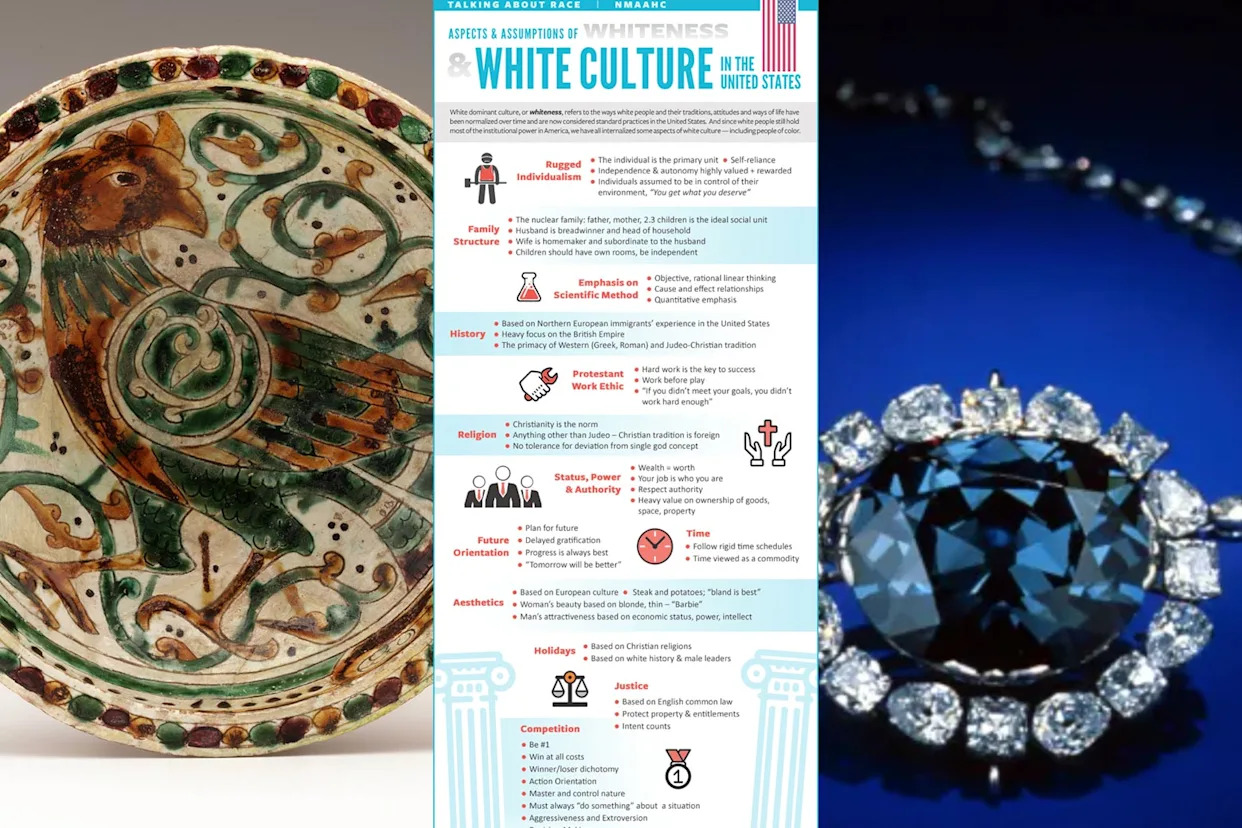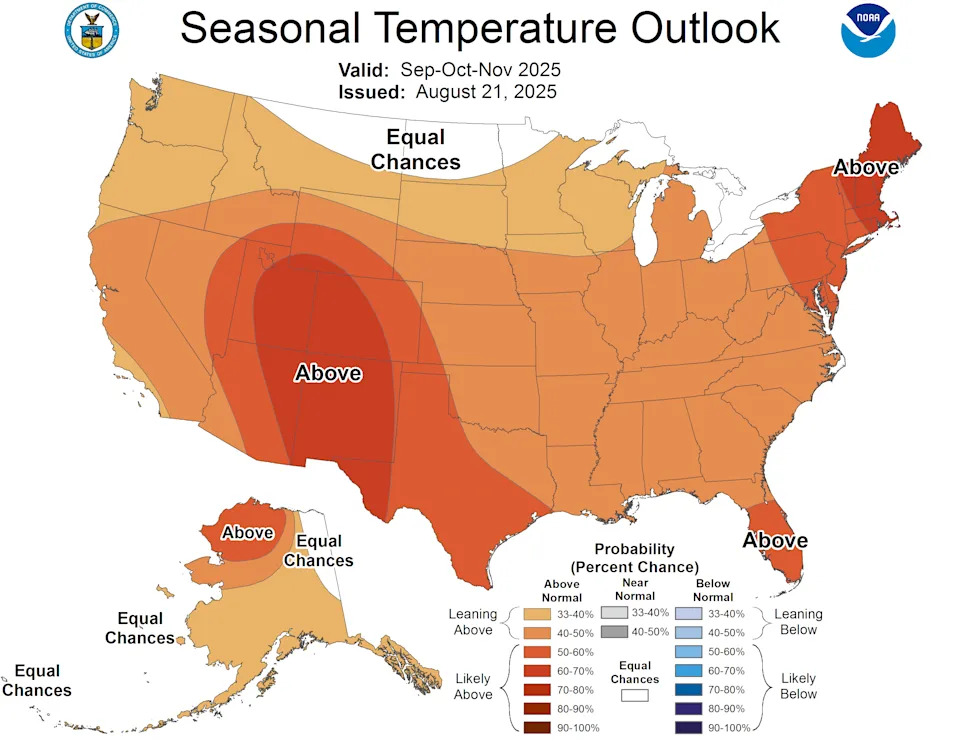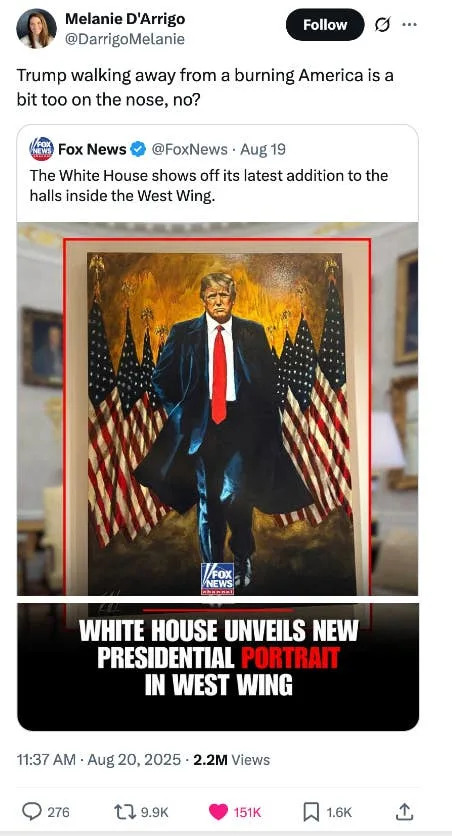
Sign up for the Slatest to get the most insightful analysis, criticism, and advice out there, delivered to your inbox daily.
Back when Masum Momaya was a curator at the Smithsonian, she would occasionally leave her office and take the short walk over to the National Museum of Asian Art for a quick break. Strolling the quiet galleries in awe, Momaya was particularly drawn to an exhibition of pottery from Afghanistan. Created by Afghan women, the pottery was delicately painted and shaped into bowls and plates, painstakingly preserved during the United States’ decades-long occupation of the country. “It was invoking centuries-old traditions of art, craftsmanship, and design that had been preserved and passed down across generations,” she told me. “It showed beauty, resilience, and complexity of a specific culture that we often had a very univision of, based on coverage of conflict.” Artifacts like this offer a window into history that Americans won’t find in their local newspapers or nightly news shows, but is something Smithsonian museums are world famous for. Yet, if President Donald Trump has his way, many of these relics could be yanked out of display cases for being too “woke.”
Just as he has attacked colleges and universities, Big Law, public broadcasters, and diversity initiatives, the president is now fixated on the Smithsonian Institution. Like many of the White House’s policy decisions, it started with an executive order accusing the museum of pushing a distorted narrative driven by ideology rather than truth. The Wall Street Journal reported that the White House sent Smithsonian Secretary Lonnie Bunch a letter demanding insight into how the museums are managed, from public-facing text on exhibitions to internal curatorial processes. On Tuesday, Trump took to Truth Social to accuse the Smithsonian of only focusing on “how horrible our Country is, how bad Slavery was, and how unaccomplished the downtrodden have been.” By Thursday, the White House put out a list of specific exhibitions it takes issue with. The Afghan pottery wasn’t on the initial list, but that does not mean it’s safe. In targeting the Smithsonian, Trump is targeting knowledge itself, and any exhibit could be next.
“What’s on the walls is not somebody’s opinion. It is something that is very much grounded in scholarship,” Momaya, now the director of narrative change at the Asian American Foundation, said. From 2012 to 2016, Momaya was a Smithsonian curator, focusing on Asian Pacific American studies. She worked on numerous exhibitions and public programs across the National Museum of Natural History and Museum of American History.
Smithsonian exhibitions are the culmination of years’ worth of work. Curators pitch exhibition ideas that require extensive archival research and visits to local communities to fully understand the nuances and complexities of different histories. If a pitch is accepted, the concept still faces layers of vetting, with numerous museum committees reviewing every word and object to consider factual accuracy and potential bias. Each Smithsonian museum has its own unique curatorial process, allowing the experts helming the work to shape it as they see fit.
Since it was created by Congress nearly 180 years ago, the Smithsonian’s work has been grounded in “the increase and diffusion of knowledge,” which curators view as an invitation for museumgoers to join a conversation about history, art, and science, arming them with research and artifacts. The Smithsonian has become the world’s largest museum, education, and research complex, with 21 museums, 14 education research centers, and the National Zoo. It employs many of the world’s top scholars, who have dedicated their entire professional careers to becoming subject-matter experts on a range of topics—Smithsonian jobs are also not easy to land, requiring significant credentials, a history of publication, and even teaching experience.
A current Smithsonian staffer, who asked to remain anonymous out of fear of losing their job, told me the Trump administration’s recent moves criticizing the museum have resulted in contentious internal debate over how to move forward. Museum leaders are reckoning with the reality that over half their funding comes from Congress, and jeopardizing it by challenging the party in power could risk a funding halt that could gut the institution’s mission. We’ve already seen the devastation that Republicans in Congress and Trump have wrought upon the Corporation for Public Broadcasting, which announced this month that it would be forced to close due to federal budget cuts after nearly 60 years in business. Some projects at the Smithsonian have already been put on hold and others are actively being restructured, the staffer told me.
In a message sent to all museum staff on Wednesday, which was shared with Slate, Bunch reiterated the Smithsonian’s commitment to intellectual honesty and integrity while subtly conceding that the institution’s collections “may evolve to reflect new discoveries and insights” and that the institution “cannot know what future critiques will hold.”
According to reporting and what my sources told me, that’s already taking place. In July, for instance, the National Museum of American History’s exhibit on democracy removed a placard referencing both of Trump’s impeachments under pressure from the White House. Though the placard was eventually replaced, the new one includes the word “alleged” when describing the actions that resulted in Trump’s first impeachment—he was charged by the House in 2019 with abuse of power and obstruction of Congress. More changes like this are expected, with the Smithsonian staffer predicting “anything about race that isn’t white, anything that’s about queers, Democrats, anything critical of the president and conservatism” could likely be removed. The staffer also noted that, in this context, “critical” could mean simply “just describing it, even.”
One former Smithsonian curator, who remains a federal employee and asked to be kept nameless out of concern for losing their job, told me the reality is that curators must act more strategically. They may still be able to exhibit important historical discoveries and moments, but will need to play it safe. “If you want to fight a battle that you’re going to lose, sure, do it now,” they said. “But if you want to be strategic and buy time because you want to do a show about the first Black inventor who happens to be a woman and gay, now is not the time to do that show.”
They predict that museums like the National Portrait Gallery will be hit the hardest, as curators focus on crafting biographies that lean heavily on people’s identities. Plus, biography can be subjective, creating space for disputable facts that the Trump administration can take issue with, as it did this week with a portrait of a family crossing the U.S. southern border. The White House criticized the National Portrait Gallery for describing the border as “exclusionary,” failing to mention that the full caption states the Mexico-U.S. border is “a space that is transnational, one that is both inclusive and exclusionary.” In 2022, this portrait was a finalist in the gallery’s Outwin portraiture series.
Other museums, like the National Museum of Natural History, may not face as many hurdles, since it features many aspects of physical history, including some undisputed assets, like the Hope Diamond.
To Momaya, it’s obvious that the Trump administration is attempting to erase history, as it takes issue with exhibits focused on explaining white privilege, LGBTQ+ experiences, and even the simple fact of slavery. Removing exhibitions that focus on these issues flies in the face of the Smithsonian’s purpose, and museumgoers will suffer the consequences.
Certain pieces of artwork will inevitably be taken down, placards explaining historical moments will be watered down, and entire exhibitions will not come to life—for now. While Trump is in office, some of the Smithsonian’s rich expertise of scholarship will have to recede into the background long enough for this current political season to pass. In the meantime, museum staff will face tough decisions: Stand up for their work, which could incite a vindictive administration that controls their livelihoods, or compromise their values to protect themselves. “They don’t want to be named on Truth Social or be targeted by the mob that sometimes gets unruly,” the former Smithsonian staffer said. “Again, these are federal workers, who are everyday people.”
Unlike many other American museums, the Smithsonian is free for all, and often a visit is someone’s first exposure to a particular style of art, snippet of history, or piece of science. It’s one of the few places where a diversity of scholarship can be found in just one place, making the institution a more serious and well-respected authority. “It’s a really precious resource,” Momaya said.
In 2026, the U.S. will commemorate its 250th anniversary, but under the Trump administration, the Smithsonian may be barred from showcasing “the complexity of how this country began, the bloodshed,” the Smithsonian staffer said. Whatever patriotism might be inherent in the semiquincentennial commemoration of this nation’s founding, ignoring simple historical facts like slavery and the displacement of native populations is a disservice not only to the scholars dedicated to studying these topics, but also to the public, who deserve to understand the full breadth of our nation’s past. “We won’t be able to even explain that or make it understandable,” the staffer noted. “If we’re reluctant to talk about, understand, and comprehend how we got here today, we’re never going to make it to the future.”








Comments